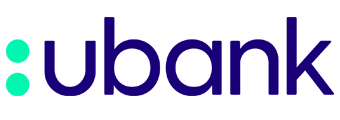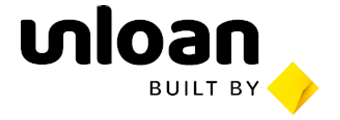Property is one of Australia's favourite investment vehicles, and no wonder. Previous Your Mortgage analysis found house prices rose by more than 1,400% over the 44 years to October 2024.
Property values have been influenced by a variety of factors in recent times, including rising interest rates, supply shortages, and shifting buyer demand. Experts suggest price growth may have peaked, with expectations of a more gradual increase moving forward.
So, where does that leave house prices across Australia right now? Keep scrolling as we dive into the latest dwelling value data, courtesy of CoreLogic.
What's Australia's median house price in March 2025?
As of 28 February 2025, the median house price in Australia stands at $880,590.
However, house prices vary significantly depending on location, particularly between major cities and regional areas. Across the eight capital cities, the median house price currently sits at $1,008,368, with Sydney leading the market and Darwin remaining the most affordable.
In contrast, the combined median house price for regional areas across the country is $677,335, offering more affordable options outside major metropolitan hubs.
What's Australia's median unit price in February 2025?
As of 28 February 2025, the median unit price across Australia is $669,853.
Unit prices tend to be higher in capital cities due to greater population density and demand. Currently, the median unit price in capital cities is $688,158, while in regional areas, it sits at $580,372.
Units remain a popular choice for investors and first-home buyers, particularly in metropolitan areas, due to their relative affordability compared to houses and strong rental demand.
Low-rate home loan deals
In the market for your first or next home or investment? Make sure you get the best home loan deal available to you! Check out some of the market's most competitive home loans below:
Lender Home Loan Interest Rate Comparison Rate* Monthly Repayment Repayment type Rate Type Offset Redraw Ongoing Fees Upfront Fees Max LVR Lump Sum Repayment Additional Repayments Split Loan Option Tags Features Link Compare Promoted Product Disclosure
Promoted
Disclosure
Promoted
Disclosure
Disclosure
Median house prices in Sydney
Greater Sydney's property market remains one of the most expensive in Australia, with a median house price of $1,464,132 and a median unit price of $855,538. Combined, the city's median dwelling price sits at $1,186,459.
While this reflects a 0.3% increase over the past month, Sydney property values have increased by 67.2% over the past decade.
Among the suburbs experiencing the fastest price growth in the past 12 months are Fairfield (+12.4%), St Marys (+9.7%), and Bringelly - Green Valley (+8.8%).
Median house prices in Melbourne
Greater Melbourne's property market has underperformed relative to other Australian capital cities, ending February with a median house price of $916,763 and a median unit price of $604,574. Combined, the city's median dwelling price sits at $772,561.
While this reflects a 0.4% increase over the past month, Melbourne property values have grown by 46.9% over the past decade.
Among the suburbs experiencing the fastest price growth in the past 12 months are Tullamarine - Broadmeadows (+0.8%), Casey - North (+0.7%), and Casey - South (+0.1%).
Median house prices in Brisbane
Greater Brisbane's property market continues to grow steadily, with a median house price of $977,381 and a median unit price of $690,651. Combined, the city's median dwelling price sits at $894,425.
This represents a 0.2% increase over the past month, with Brisbane property values rising by 90.7% over the past decade.
Among the suburbs experiencing the fastest price growth in the past 12 months are Loganlea - Carbrook (+14.2%), Beenleigh (+14.0%), and Ipswich Hinterland (+13.5%).
Median house prices in Adelaide
Greater Adelaide's property market remains strong, with a median house price of $873,029 and a median unit price of $589,134. Combined, the city's median dwelling price sits at $822,201.
This reflects a 0.3% increase over the past month, with Adelaide property values surging by 93.3% over the past decade.
Among the suburbs experiencing the fastest price growth in the past 12 months are Playford (+15.9%), Gawler - Two Wells (+14.8%), and Salisbury (+14.2%).
Median house prices in Perth
Greater Perth's property market continues to grow, with a median house price of $840,400 and a median unit price of $592,417. Combined, the city's median dwelling price sits at $807,933.
This represents a 0.3% increase over the past month, with Perth property values rising by 54.7% over the past decade.
Among the suburbs experiencing the fastest price growth in the past 12 months are Swan (+20.0%), Kwinana (+18.6%), and Mundaring (+18.4%).
Median house prices in Hobart
Hobart's median house price is $699,533 while its median unit price is $533,514. Combined, the city's median dwelling price sits at $661,544.
This reflects a 0.4% increase over the past month, but Hobart property values have risen 87.1% over the past decade.
Among the suburbs experiencing the fastest price growth in the past 12 months are Brighton (+3.9%), Hobart - North West (+1.8%), and Sorell - Dodges Ferry (+0.9%).
Median house prices in Canberra
The ACT capital's property market has a median house price of $963,146 and a median unit price of $589,329. Combined, its median dwelling price sits at $846,955.
This reflects a 0.2% increase over the past month, with Canberra property values rising by 60.2% over the past decade.
Among the ACT suburbs experiencing the fastest price growth in the past 12 months are Molonglo (+1.3%), Tuggeranong (+0.9%), and Belconnen (+0.5%).
Median house prices in Darwin
Greater Darwin's property market remains relatively affordable, with a median house price of $588,737 and a median unit price of $359,937. Combined, the city's median dwelling price sits at $506,591.
This reflects a -0.1% change over the past month, with Darwin property values declining by 2.0% over the past decade.
Among the areas experiencing the fastest price growth in the past 12 months are Palmerston (+4.4%), Darwin Suburbs (+2.7%), and Darwin City (-2.5%).
Image by Martin David on Unsplash







Share